Research activities
Infectious & Emerging Diseases
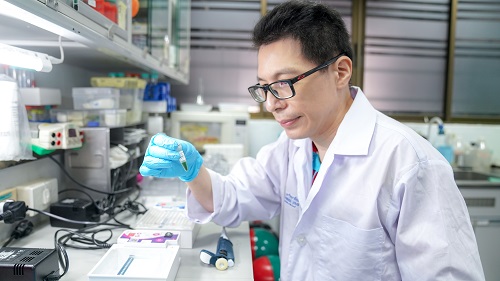
Asst.Prof.Dr. Santi Maneewatchararangsri
Leptospirosis Research
Assistant Prof. Dr. Santi Maneewatchararangsri has been a member of the Faulty of Tropical Medicine since 2009. He collaborates with academic researchers from many disciplines worldwide. His research is focused on leptospirosis and encompasses basic science, serodiagnosis, vaccine development, and immunotherapy based on therapeutic antibody fragments and fusion antibodies.
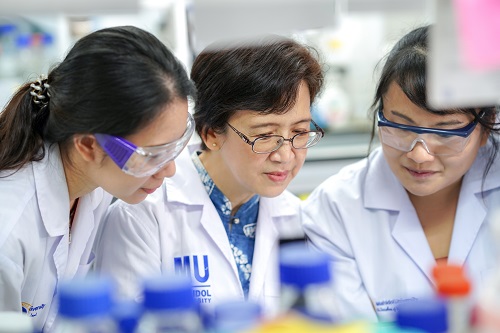
Assoc. Prof.Piengchan Sonthayanon
Molecular diagnosis and Molecular epidermiology of Scrub typhus
Scrub typhus, a rickettisal infection caused by Orientia tsutsugamushi, is a major pathogen in the Asia-Pacific region where an estimated 1 billion individuals are exposed and 1 million cases occur each year. Disease severity within any given population can vary wildly from asymptomatic to fatal. Determinants of infection and of disease severity may be dictated by environmental, bacteria or host factors. We have developed a quantitative molecular diagnosis of O. tsutsugamushi to define the presence of O. tsutsugamushi in venous blood at presentation. We demonstrated that the O. tsutsugamushi load in blood is associated to disease severity in humans.
Malaria
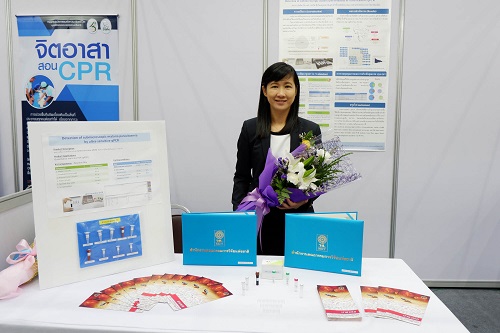
Prof. Mallika Imwong
Molecular Characterisation of Drug Resistance in the Human Malarias
Antimalarial drug resistance threatens the health of people living in tropical countries. We aim to conduct research which will help us to understand how drug resistance emerges and spreads in the malaria parasites affecting humans in Asia. This involves studying the changes in the genes which cause the parasites to be resistant. We focus particularly on both Plasmodium falciparum and Plasmodium vivax malaria which causes more than 90% of malaria cases in Africa Asia and the Americas. This work should help us to understand, and to measure resistance, and thereby help us to deal with it effectively.
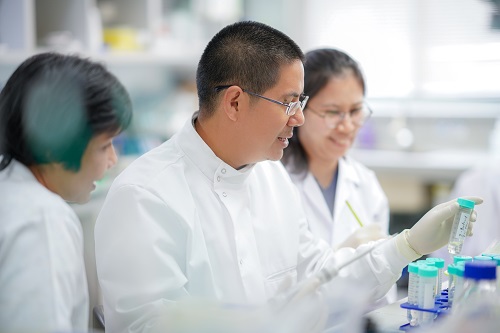
Assist. Prof. Wang Nguitragool
Plasmodium invasion and transmission
My group aims to understand the mechanism of red cell invasion by malaria parasites. In particular, we are interested the molecular interactions that underlie the reticulocyte specificity of Plasmodium vivax. In addition to using fresh P. vivax isolates from malaria patients, our research utilizes culture-adapted P. knowlesi as a model system to investigate the parasite biology.
We are also interested in transmission of Plasmodium parasites from man to mosquito, a step required for the spreading of disease and drug resistance. We are currently identifying new candidates and developing vaccines to block P. vivax transmission using the mRNA platform.

Assist. Prof. Naowarat Saralamba
Molecular Characterisation of Anti-Malarial Drug Resistance genes from P. malariae and P. ovale
Plasmodium malariae and Plasmodium ovale are two of five important parasites that infected human but their molecular biology are not yet well characterized. We emphasize to isolate the antimalarial drug target genes from Plasmodium malariae and Plasmodium ovale. The basic knowledge on drug resistant genes from all human malaria parasites is crucial for further development of effective antimalarail drugs.
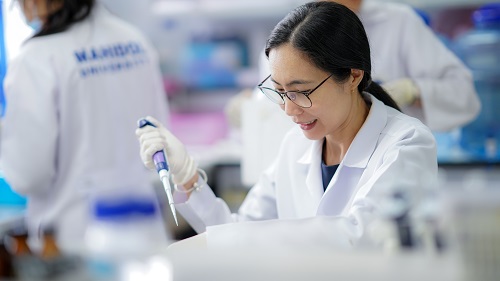
Assoc. Prof.Usa Boonyuen
In malaria elimination settings, a broad range of targeted interventions are needed to interrupt the local transmission. However, antimalarial drugs, such as 8-aminoquinolines (primaquine and tafenoquine), which play essential role in malaria elimination, can cause drug-induced hemolysis in individuals with glucose-6-phosphate dehydrogenase (G6PD) deficiency. Primaquine and tafenoquine are able to clear hypnozoites of Plasmodium vivax and P. ovale in the liver, preventing relapse. Moreover, primaquine remains the only available drug capable of killing mature P. falciparum gametocytes in humans, blocking transmission. With the hemolytic toxicity of 8-aminoquinolines, the use of 8-aminoquinolines is limited.
Our group is using different approaches to detect G6PD deficiency. We aim to develop rapid, sensitive and high-throughput molecular diagnostic tests for screening of G6PD deficiency. The ultimate goal is to accelerate the diagnostic development and implementation pathway of treatment using 8-aminoquinolines. We are also interested in understanding the molecular mechanisms underlying clinical manifestations in G6PD deficient individuals. Functional and structural characterization of various G6PD variants is being done in our laboratory.

Dr.Matthew Phanchana
My group has a particular interest in drug mechanism of action and resistance. Our research areas are subject-based, rather than organism-based, as we work with various organisms. Currently, we are working on Plasmodium falciparum and Clostridioides difficile to elucidate the mechanism of action and resistance to current treatment regimens and also new compound development. We are woking closely with a medicial chemisty at the Faculty of Science to generate new compounds and modify them to facilitate the study.
We utilise many molecular techniques to answer the questions. This includes, but not limited to, biochemical, enzymology, genomic, proteomic, metabolomic, imaing, and flow cytometry.
Protein & Bioinformatics
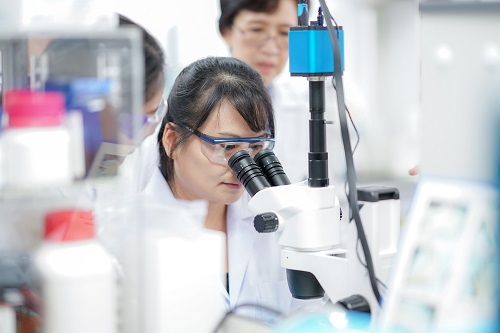
Assoc. Prof.Onrapak Reamtong
The study of the genome and mRNA expression cannot provide all of the details in cell systems. The mRNA changes do not direct relate to changes in protein levels due to different rate of translation, posttranslational modification (currently-71), subcellular lacalization and degradation. These emphasize the requirement for evaluating protein studies.
Recent successes illustrate the role of mass spectrometry-based proteomic as a tool for molecular, cellular biology and systems biology. The ability of mass spectrometry is applied to tropical disease research. These include the study of protein-protein interactions, proteome-wild scale, quantification of proteins from complex samples and drug binding sites.
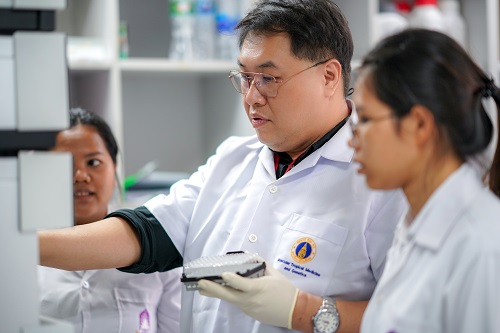
Dr. Supachai Topanurak
Proteomics is the large-scale study of proteins, particularly their structures and functions. Proteins are vital parts of living organisms, as they are the main components of the physiological metabolic pathways of cells. Not only does the translation from mRNA cause differences, many proteins are also subjected to a wide variety of chemical modifications after translation. Many of these post-translational modifications are critical to the protein’s function. Biomarker is one of attractive topics for proteomics. Diagnosis of tropical diseases requires good indicators. Proteomics can be a good tool for biomarker discovery.
Mass spectrometry was applied for proteomics study both of protein and peptide level. Mass spectrometry can provide study of proteins in term of not only qualitative proteomics but also quantitative proteomics. Therefore, application of proteomic technique definitely provides greatly elucidation of biological activities in organisms, especially tropical disease pathogens.
Neurological Diseases
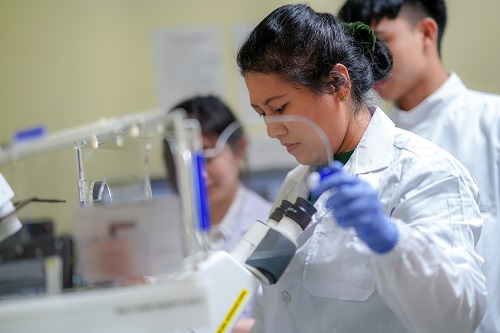
Dr. Suangsuda Supasai
Our laboratory is interested in mechanisms of neuronal degeneration during aging, particularly in Alzheimer’s disease (AD). The brain loses neurons and connections between cells due to aging, injury, or disease. When these losses reach above a certain threshold and the neuronal regeneration is minimal in the adult brain, people develop clinical symptoms. So far, no effective therapeutic strategies for AD have been successfully developed despite its increasing rate in elderly. The major challenge of AD therapy is a lack of profound understanding of key mechanisms that underlie pathogenesis. Thus, we focus on identifying how cell biological processes are disrupted in AD using the cultured neurons and the rat model. In particular, we examine mechanisms involving the early onset of the disease that is associated with an imbalance of the cellular redox system. Moreover, owing to a variety of plants and organisms in Thailand, our research interests extend to a phenotype-based screening for botanical compounds that are potential for AD prevention and therapy. We use a wide range of approaches, including biochemistry, molecular and cellular biology, pharmacology, immunohistochemistry, confocal and electron microscopy, cell culture, and animal modeling.
